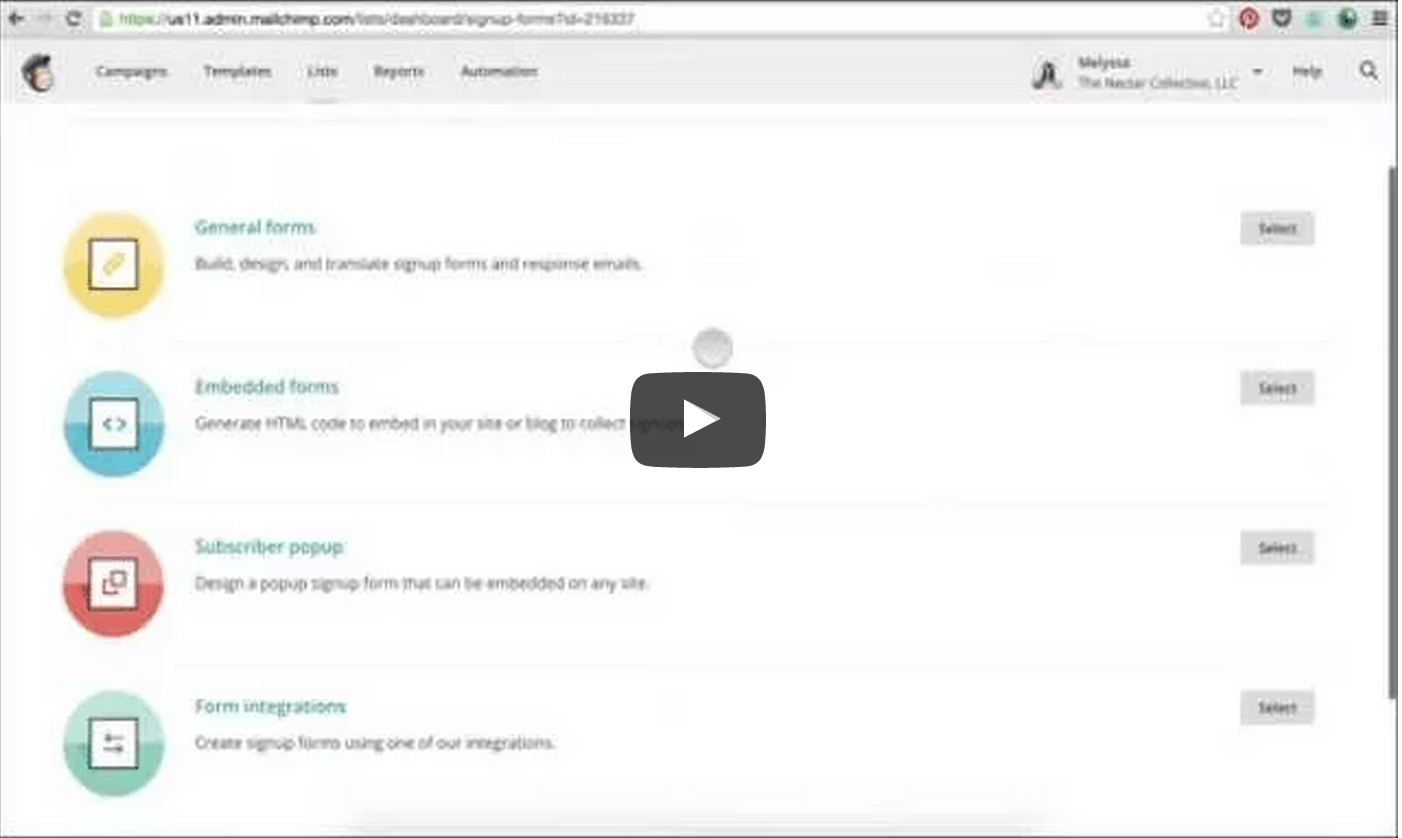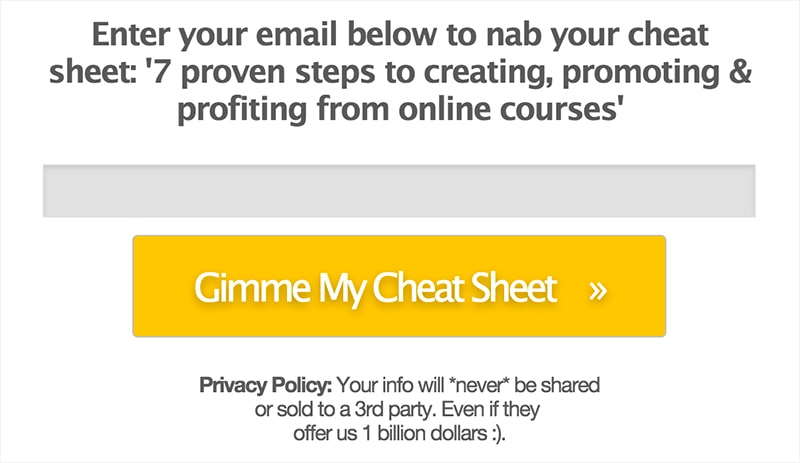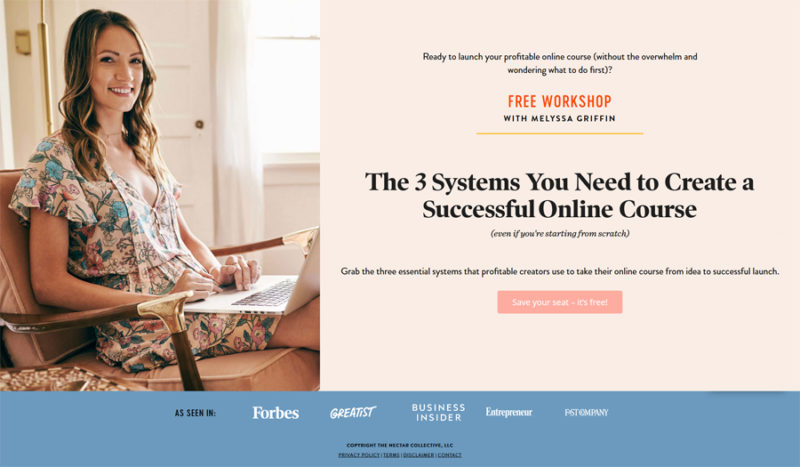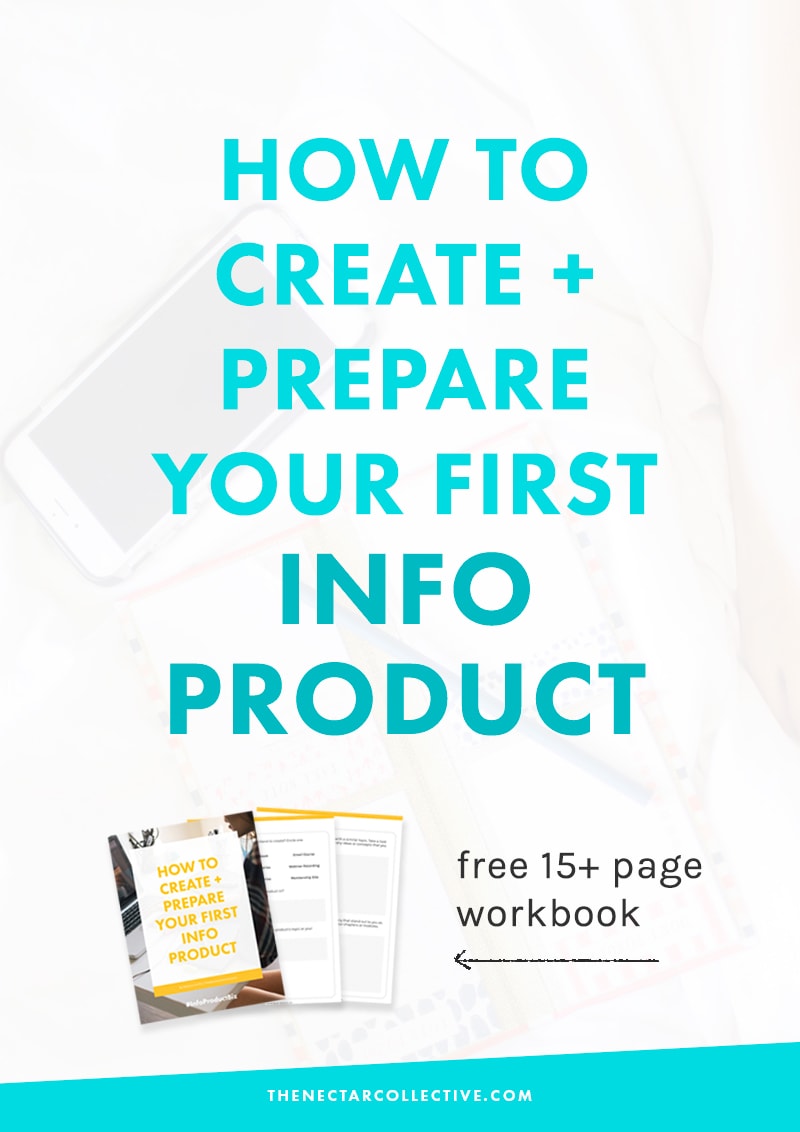
The very first paycheck I received from this blog was in April 2013, about three months after it was created. The ever exciting total?
$25.53.
At that time, I had no intention of monetizing my blog or turning it into a business. I “went with the flow” and tried a whole mess of different things until discovering where my passions and skills really existed. Since then, I’ve started four different types of businesses: web design, blog coaching, a print shop, and now online courses and workshops. While I’m ridonkulously grateful for those experiences, I realize that not everyone wants to spend two years figuring out what kind of business model would work best for them. Unless, y’know, you’re more of a “let’s take the scenic route” kind of person. 😉
In this 4-week series, #InfoProductBiz, I’m going to be showing you the step-by-step process I’d take if I were to start an info product business from scratch. Here’s what you can expect from the series:
- How to Create and Prepare for Your First Info Product
- How to Prime and Grow Your Audience by Building Community and Trust
- How to Create a Sales Page and Get Your Product Up for Sale
- How to Launch and Market Your First Info Product
So, if you’ve been wanting to create your first info product, then this series will guide you through the process, from start to finish. Before we get started, let’s answer something that miiiiight be kind of (super) important to the foundation of this post: What IS an info product? Glad you asked, Jeeves. An info product is any type of product you create that teaches people how to do something that you already know.
Here are some info product examples:
- Ebooks
- Physical Books
- E-courses
- Workbooks
- Video Series
- Audio Series
- Email Courses
- Webinar Recordings
- Membership Sites
Got some ideas flowing? Good! Now, let’s walk through each step to plan and create your first info product. Woo! Oh, and there’s also a 15+ page workbook to help you get through each step.
Step 1: Decide who you want to help. (Day 1)
A lot of people do this step backwards by focusing on what they want to do or create, rather than focusing on who they’ll serve. It’s all gravy if you want to create and e-book about healthy eating, but if you don’t know your audience, then you’ll have a tough time marketing your new business to the right people and positioning yourself as someone that your audience should buy from.
So, let’s take that healthy eating e-book as an example. Not knowing your audience may mean that you cram whatever healthy recipes you can think of into your e-book. To you, it might sound like an awesome deal (“246 Healthy Recipes!”), but to others, it sounds like something they’d have to pick through just to find something that fits their nutrition and lifestyle.
Better options? “Quick Paleo Meals for Your Family” or “Healthy Meals for Cheap College Students.” Do you see how both of these titles speak directly to a specific type of person and their lifestyle? In the first example, this book would be geared toward busy, working parents who don’t want to sacrifice nutrition for convenience. In the second example, we’re speaking to college students who sometimes pay $0.12 for Top Ramen and call it dinner.
In this step, we’re just focusing on which type of person you’d most like to help, so don’t worry about creating your product idea just yet. Remember, these are the people who will be your students or customers. Who do you want to connect with most?
Related: How to Choose a Focus for Your Blog (And Why It’s the Most Important Thing You’ll Do as a Blogger)
Step 2: What will the topic of your product be? (Day 1)
Time to brainstorm! Now that we’ve found our main peeps, it’s time to decide what YOU can create that will help them in some way. You must also decide how this product fits into your ideal customer’s life — why would they want it? The important aspect of product planning is creating something that fills a need for your audience. Unless you’re a mind reader (shout out to the mind readers out there!), it’s unlikely that you’ll be able to psychically divine which type of product your peeps would love most. In that case, survey them!
Surveys are a great way to figure out what your audience needs and how you can help them. But as Ryan Levesque mentions in his book, Ask, you don’t want to directly ask people, “hey, what do you need help with?” This is like asking your friends where they want to go for dinner. Uhh, I dunno. What about you? The truth is that most people don’t know what they want, but they do know what they don’t want. Instead, create a survey where you ask them what their biggest challenge or struggle is regarding your niche. For example, “What is the biggest challenge you’re facing in regards to healthy eating?” After receiving your responses, you can see which answers come up over and over again. This, my friend, is your sweet spot and it’s what people need from you most.
Now, of course, it’s up to you to pull an idea from these survey responses that you’re actually able to teach. Don’t just choose something that is a popular answer if you’re still a newbie yourself. The best info products combine your skills and passion with what your audience needs most.
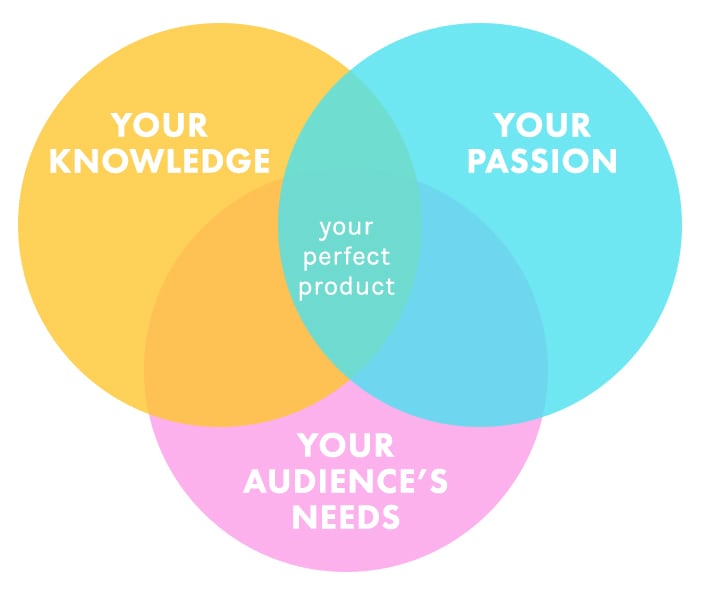
What if you don’t have an audience to survey? Good question! If you haven’t started an email list yet, then you may be wondering how to accomplish this step. First of all, I would begin creating your email list (Step 4 below) as soon as you can and then sending out a survey once your list reaches 100 people. While you’re waiting for that to happen, here are a few other strategies you can try:
- Observe Facebook groups. Join FB groups where your ideal audience would hang out and then just take note of the types of questions they ask. What is stumping them most? If you have an answer, make sure to answer their questions, too, so that they begin to notice your expertise and helpfulness.
- Ask your survey question IN Facebook groups where your ideal audience hangs out. This likely won’t be as beneficial as surveying your audience through email, but you’ll still get some specific answers that don’t rely on how big your email list is. In my Facebook group, Limitless Entrepreneur, you can ask for help or feedback and have others respond with ideas. That would be a great place to ask your survey question!
- Pay attention on Twitter and Instagram. Likewise, people are always asking questions on Twitter and Instagram. Scroll through the feed of people you follow and also look up hashtags that your ideal audience may be using. This is another great way to find what people are asking and help to answer their questions.
- Reach out to someone with a similar target market and inquire about paying them to send out your survey to their audience. This could be a good way to survey a lot of people in your niche. After the survey closes, your partner would send you a list of responses.
Step 3: Which format should you create your product in? (Day 1)
Now we’re getting to the good stuff: actual product creation! Now that you’ve surveyed your audience and have a good idea of your product’s topic, it’s time to decide which format to deliver it in. Some formats are obvious — for example, a webinar recording will almost always include a video. But others, like online courses, are up to you.
Typically, products that only include a written version, like e-books or email courses with no video, are less expensive than products that include multimedia. To decide which would work best for your audience and topic, try answering these questions:
- Does your product need to fit a certain price point for your audience? For example, if your audience is mainly college students, it’s unlikely they’ll be able to afford a $297 online course. Therefore, you might want to try something with a monthly subscription or lower cost (such as an e-book).
- Which format would help your customers learn the material most easily? If you are teaching people how to use Photoshop, then an e-book would likely make it difficult to understand each step. In that case, an online course that includes videos would be your best bet.
- Which format do you feel most comfortable teaching in? Personally, I would take this question lightly, as I think you’re a rockstar and can really do anything if you push yourself and practice enough.
Step 4: Plan out your e-product. (Day 2)
When I’m planning a new product, course, or even blog post, I take a few minutes to just jot down ideas in a Google Doc. Do not edit your work as you’re writing — just write. Keep going until you feel like you have no other ideas or steps to list. Then, try to write a little more. When you feel like your list is complete, hop on over to Amazon.com.
Pat Flynn suggests going to Amazon so that you can look up books related to your topic and check out their table of contents to see if you missed any big ideas. The point here is not to copy other people’s work (don’t read the actual book!), but rather to see if there are any holes in your planning that may have eluded you. Now, you get to explain those ideas in your own words.
Once you have your master list of ideas for your info product, you’ll notice certain themes or ideas start to emerge. Condense your biggest ideas into “chapters” or “modules” (or however you intend to categorize your information). Then, sort the other items from your list into each of these chapters or modules. You, my friend, have created an outline.
Once you have a solid outline, now you just need to actually create the content for each lesson. My info products tend to be courses or workshops, so I like to write out more notes in my outline and then start creating my courses in Keynote, which I will later record and turn into course videos. It’s really up to you how you begin the creation of your info product. While you’re doing that, move on to Step 5.
Step 5: Create an email list. (Day 3)
Creating an email list should be one of your top priorities. I’ve talked before about why you need an email list, but here are a few refreshers:
- It’s one of the only things you have FULL control over. Social media is freakin’ awesome, yes? But as much as we may love it, we don’t own our Instagram feeds or Facebook pages. Instagram and Facebook do. (Actually Facebook owns Instagram, so basically Facebook just owns everything. #amiright?). But for real, next to your blog, your email list is the only thing that you are the owner of. You need one, friend.
- Emails are a lot more intimate. If someone invites you into their inbox, there’s a level of trust that they’ve given to you. People who trust you are typically more loyal and ready to buy from you.
- It’s much easier to reach people. Publishing a blog post or social media update does not guarantee that anyone will actually see what you have shared. The best way to ensure that they do hear what you have to say? Send them an email. Boom. Bam. Done.
Need help starting your first email list? If you’re a beginner, I recommend using Mailchimp, which is free for up to 2,000 subscribers and a great platform to begin with. If you need help getting your account set up and sending your first newsletter, I created a step-by-step tutorial and video walk-through for you here.
If you’re more advanced, you may want to check out ConvertKit, which is what I recommend to my students. It has the more advanced features of high-end email marketing systems, but without the enormous price tag and learning curve. (That’s an affiliate link, by the way. I love and recommend ConvertKit, but just wanted to keep it real here).
Step 6: Create a lead magnet that attracts your ideal customer. (Day 4-5)
A lead magnet is something that you give away for free in exchange for someone’s email address. To get the most out of your lead magnet, it’s important (dire!) that it attracts the right people. There would be little use for creating a lead magnet that isn’t hyper-relevant to your ideal audience, because then you’d be growing a list of people who will never purchase your products or share your work.
Now that you have a firm grasp on who you’re creating for and what type of work you’ll be doing, it should be fairly easy to create a lead magnet that helps those types of people and is relevant to your work. Similarly, you want your lead magnet to prime your audience for your product. Using our previous example, if you’re creating an e-cookbook with quick, paleo meals, then your lead magnet could be something like, “10 Reasons Why Paleo Will Change Your Life” or “5 Easy Paleo Meals for Beginners.” Both of these examples get your audience ready to fall head over heels for Paleo, so that when you release your full cookbook, your peeps will already be interested.
Here’s an example of a lead magnet from David Siteman Garland, who has a popular info product about how to create a profitable online course.
Step 7: Create opt-in forms and a landing page for your lead magnet. (Day 6)
Once you create your free lead magnet, you need to create some forms where people can sign up to receive it. I recommend adding a form to your sidebar, in the header of your website, and below your blog posts. Most email systems, like Mailchimp, come with forms that you can use and embed into your site. However, to fully customize the look of your form without CSS, try plugins like OptinMonster, Thrive Leads or LeadPages. Just make sure that your form tells people what they’ll be receiving, rather than including uninspired text like, “Sign up for my newsletter.”
Likewise, I also recommend creating a landing page for your lead magnet. A landing page is essentially just a single page devoted to one thing in particular. LeadPages is what I recommend for your landing page lead magnets and they have very simple-to-use templates where you can create a beautiful page with no coding knowledge whatsoever. Other alternatives include Thrive Architect or Elementor.
This is an example of one of my landing pages:
You can view the live page here. By the way, notice how I used a photo of myself looking at the opt-in box? LeadPages has actually tested this, and conversion rates tend to be higher if you include a photo of someone looking at the form. Interesting, right?
Once you create your landing page, you can add the link to this page to your social media profiles, within blog posts, and in your social media posts. Social media is an excellent way to drive more traffic to your lead magnet, which will help your people out (because they’re getting your stellar freebie) and will grow your email list. FIST BUMP.
Step 8: Work on your info product. (Day 7, onward)
This is essentially something that you’ll be doing throughout this 4-week series. Try to carve out at least an hour each day (or a few hours a week) to plan, write, or record your info product. Based on your outline, I also recommend creating a schedule of when you will finish each module or chapter. That way, you have some easy accountability (and deadlines) to stick to.
I’m getting excited just thinking about all the awesome info products you’re going to create. SO EXCITED. In the next part of this series, I’m going to be explaining a step that most people miss when describing how to create a business: how to build a community. I’m convinced that growing an authentic, engaged audience that trusts you is absolutely vital to creating a lasting business. I’m already looking forward to next week’s post because it’s really one of my favorite topics.
In the mean time, you have seven days to work on the steps from this post. I’m rooting for you, friend! Leave a comment below to let us know which step you’re on or if you have any questions. If you share this series (and your progress!) on social media, then use the #InfoProductBiz hashtag so that we can all follow along with each other. Woohoo!
Keep learning! >> Check out the next post in this series: How to Prime and Grow Your Audience for Your First Info Product

